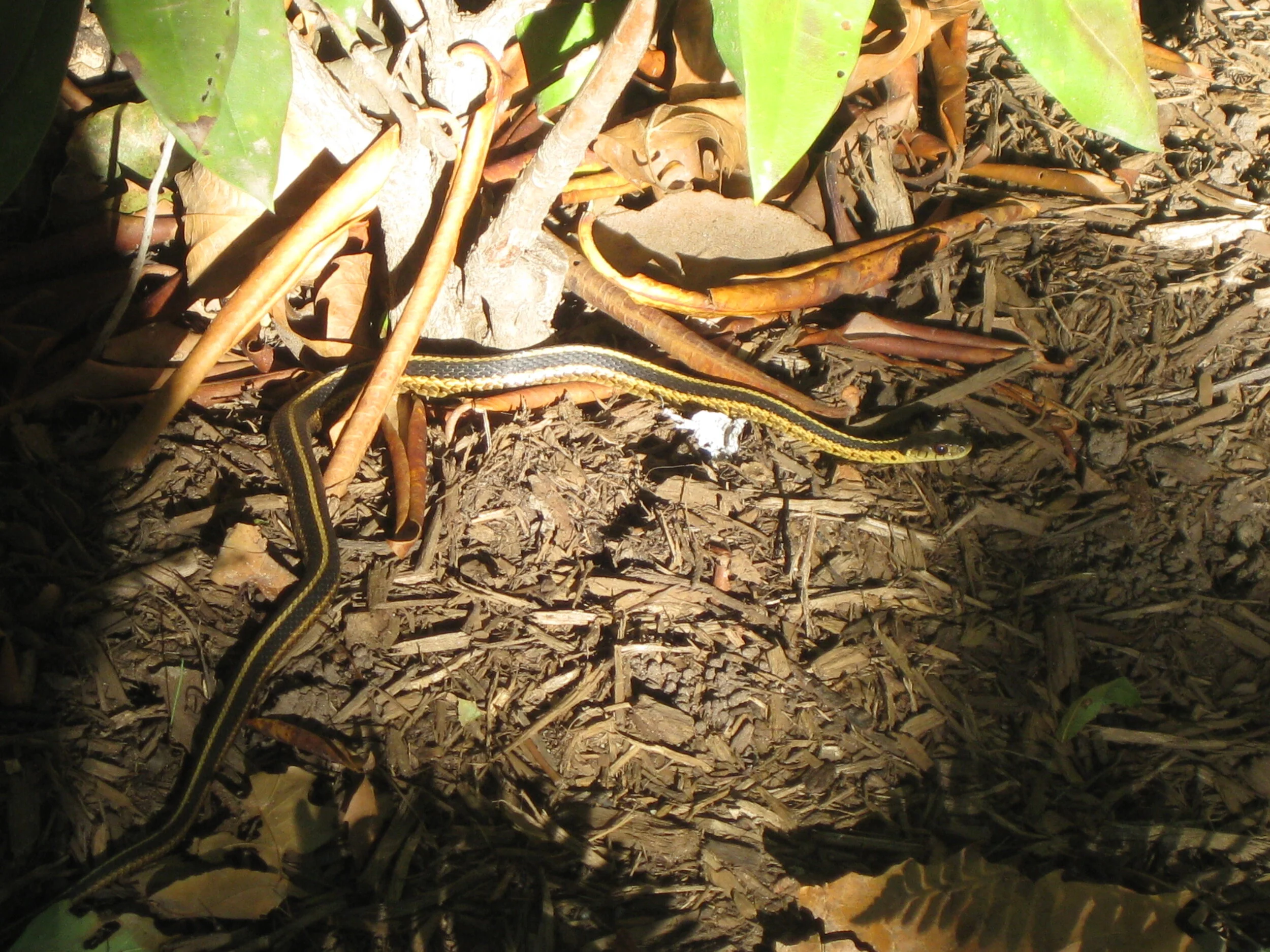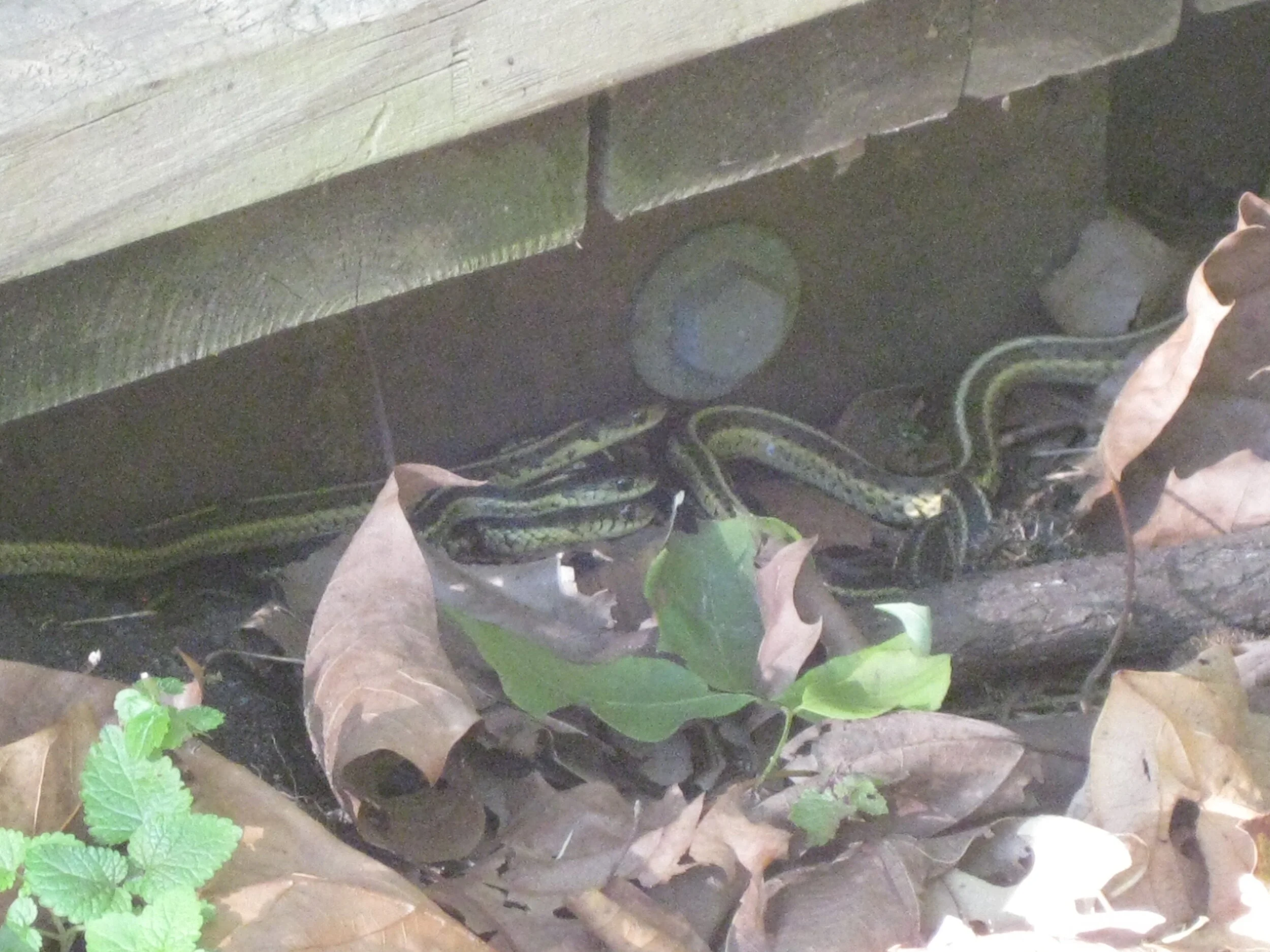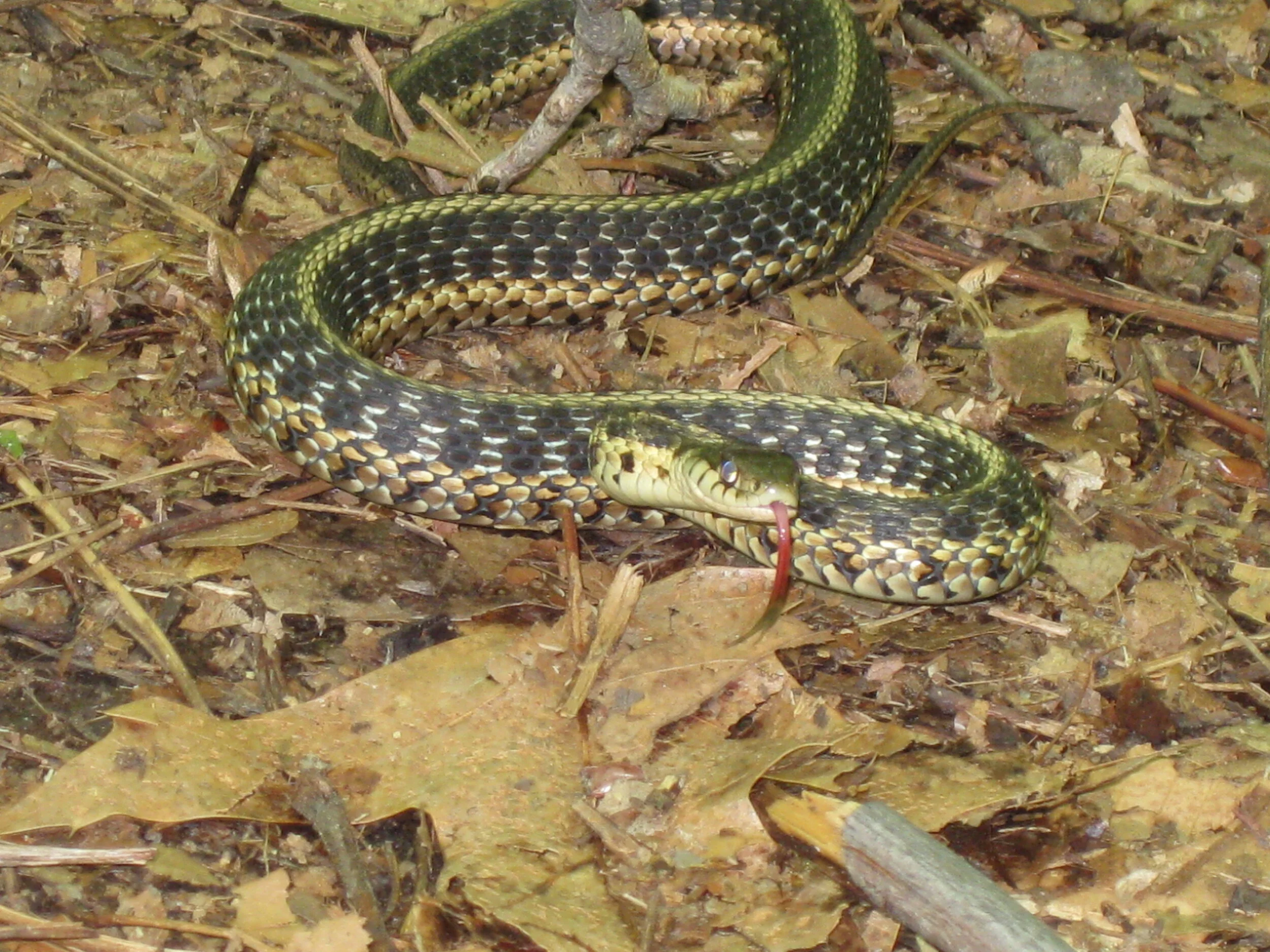Eastern Garter Snake
Thamnophis sirtalis sirtalis
Class: Reptile
Average Size: 18-26 inches
Lifespan: 2-10 years
Diet: Carnivore
Habitat: Meadows, woodlands, marshes Conservation Status: Least Concern
The Eastern garter snake is one of the most common species of snake found in New Jersey. They can often be found slithering through meadows, tall grass or hiding under logs. This species is very timid and will often quickly dart away after being spotted. The garter snake has a base color of dark gray and features three stripes that run down the back of the snake. These vibrant stripes vary in color from yellow, blue or green and the underbelly of the snake is pale yellow or light green. The Eastern garter snake features keeled scales and a broken spotted pattern along the sides of the snake. The garter snake is a colubrid, therefore, it is non- venomous it is completely harmless to people. This species is often confused with the less common ribbon snake; however, the easiest way to differentiate the two in the field is to look at the girth of the snake. Garter snakes are bulkier while ribbon snakes are more slender.
Breeding season for garter snakes usually occurs from March to April after the snakes emerge from hibernation. The snakes will congregate in a breeding ball where each snake will breed with multiple partners. The garter snake is viviparous, which means they give birth to live young. The young remain inside the female for 90 to 100 days with the young being born from July to October. Between 10 and 40 individual snakes are born in a single clutch and receive no parental care. The advantage of birthing live young is no predation of eggs and faster development of young inside the female.
The garter snake is a predator with a highly varied diet. Unlike most snakes that feed almost exclusively on rodents, garter snakes will also eat fish, tadpoles, frogs and worms. Despite its varied and carnivorous lifestyle, the garter snake is not a top predator. Many other animals will prey on garter snakes, including foxes, fish, skunks, raptors, and even larger snakes, making them an important part of the food web.
Garter snake populations are stable and healthy, making them a species of least concern. However, humans can still pose a threat to these reptiles. Illegal collection of garter snakes for the pet trade can significantly reduce their populations in an area. In addition, urbanization has led to more human and snake confrontations. Garter snakes are somewhat tolerant of urbanization and can often be encountered in backyards. Unfortunately, people often kill the snakes in fear of the snake being venomous. The garter snake is harmless, non-venomous and will often slither away quickly after being discovered. If you see one in your yard, it means you no harm! Stay calm, snap a picture if you can, and leave it be!
Want to learn more about the Eastern Garter Snake? Visit the NJDEP Division of Fish and Wildlife.





